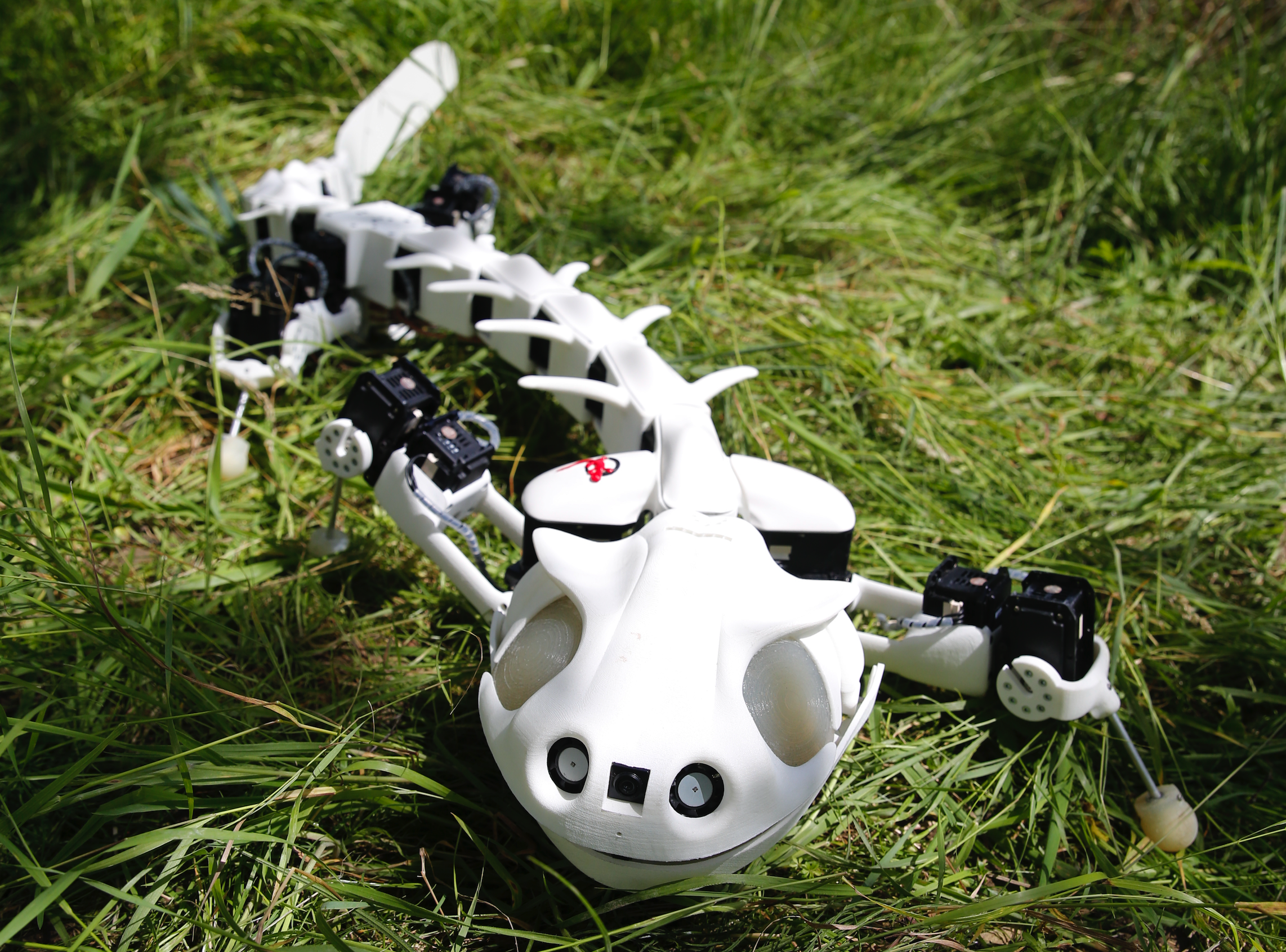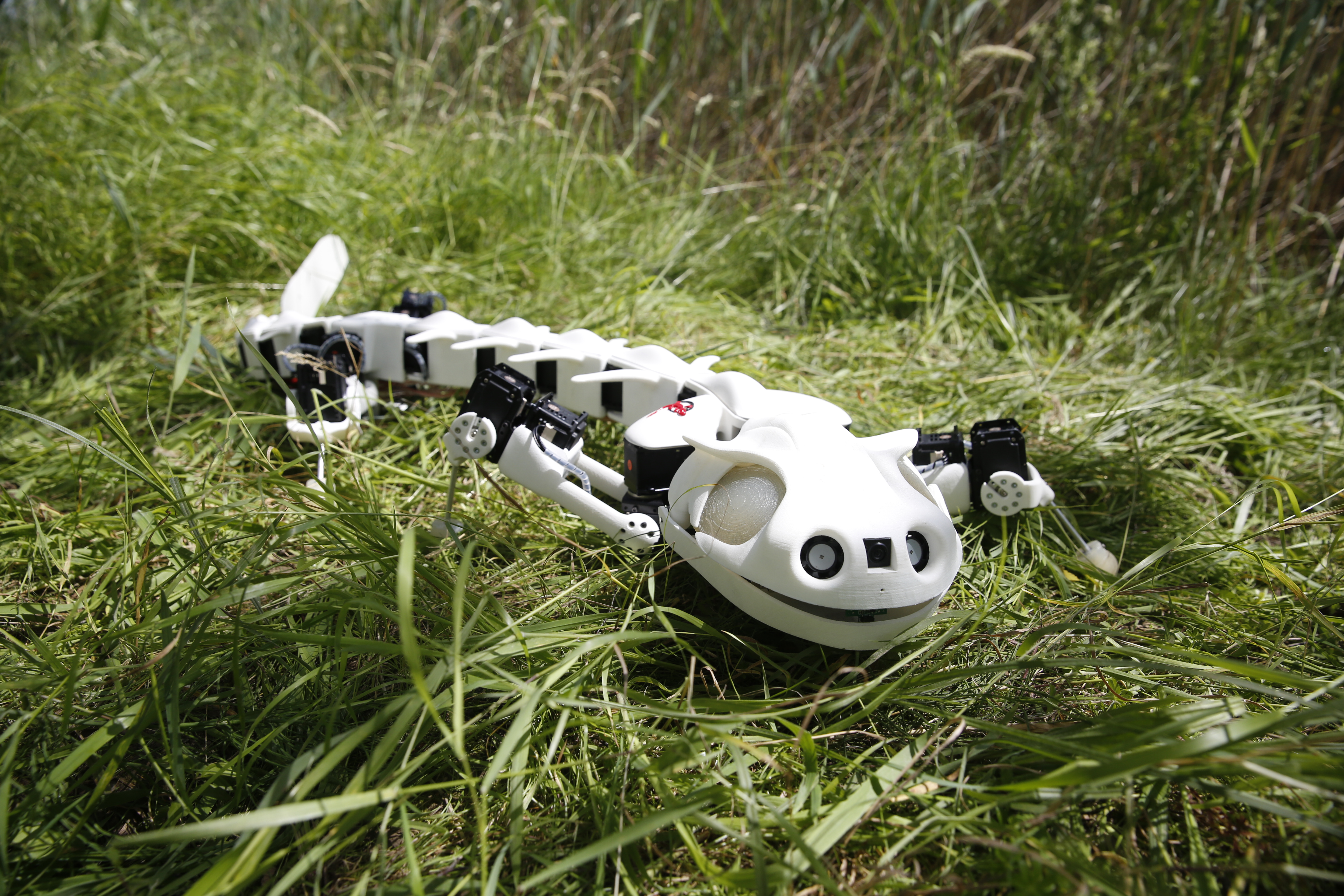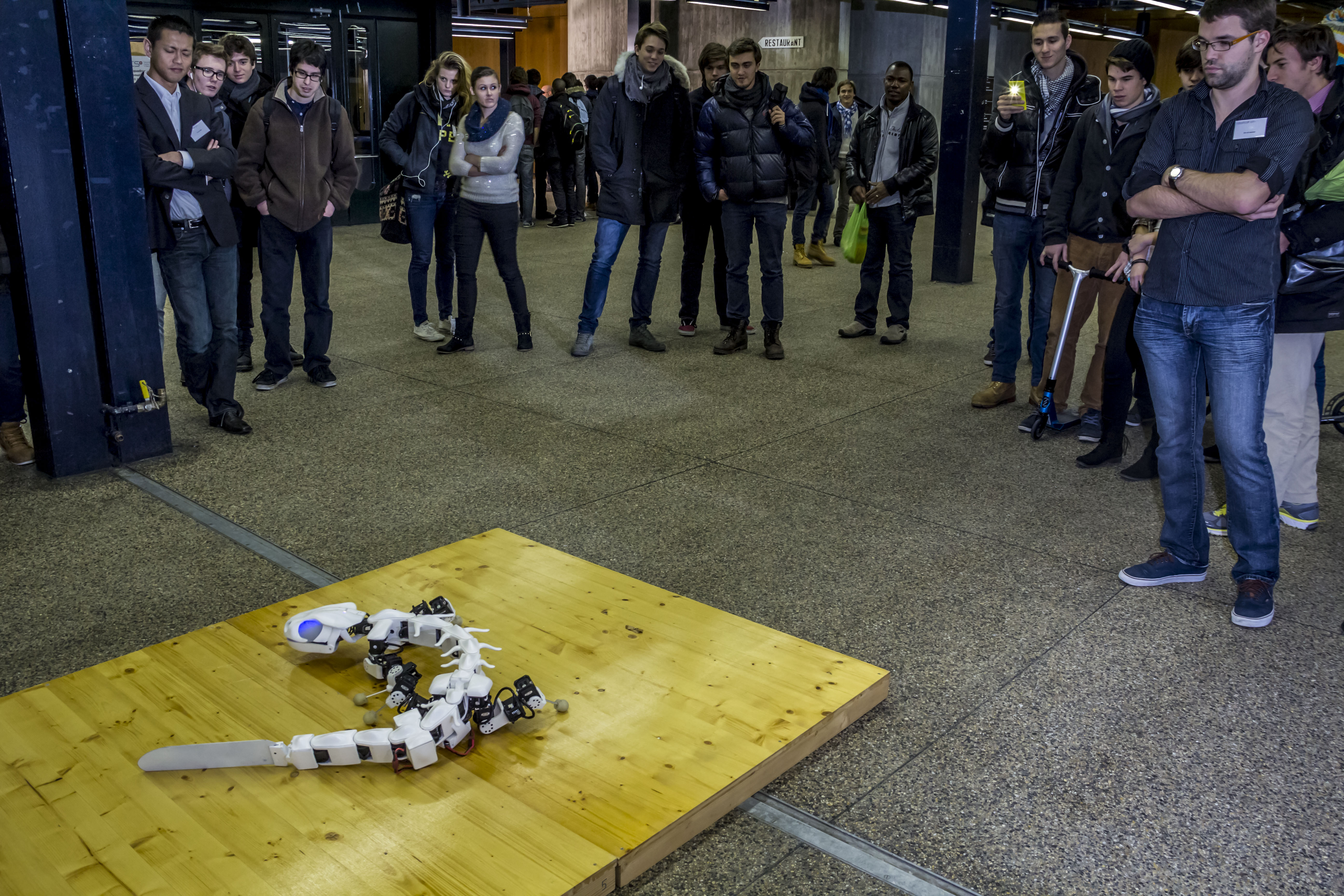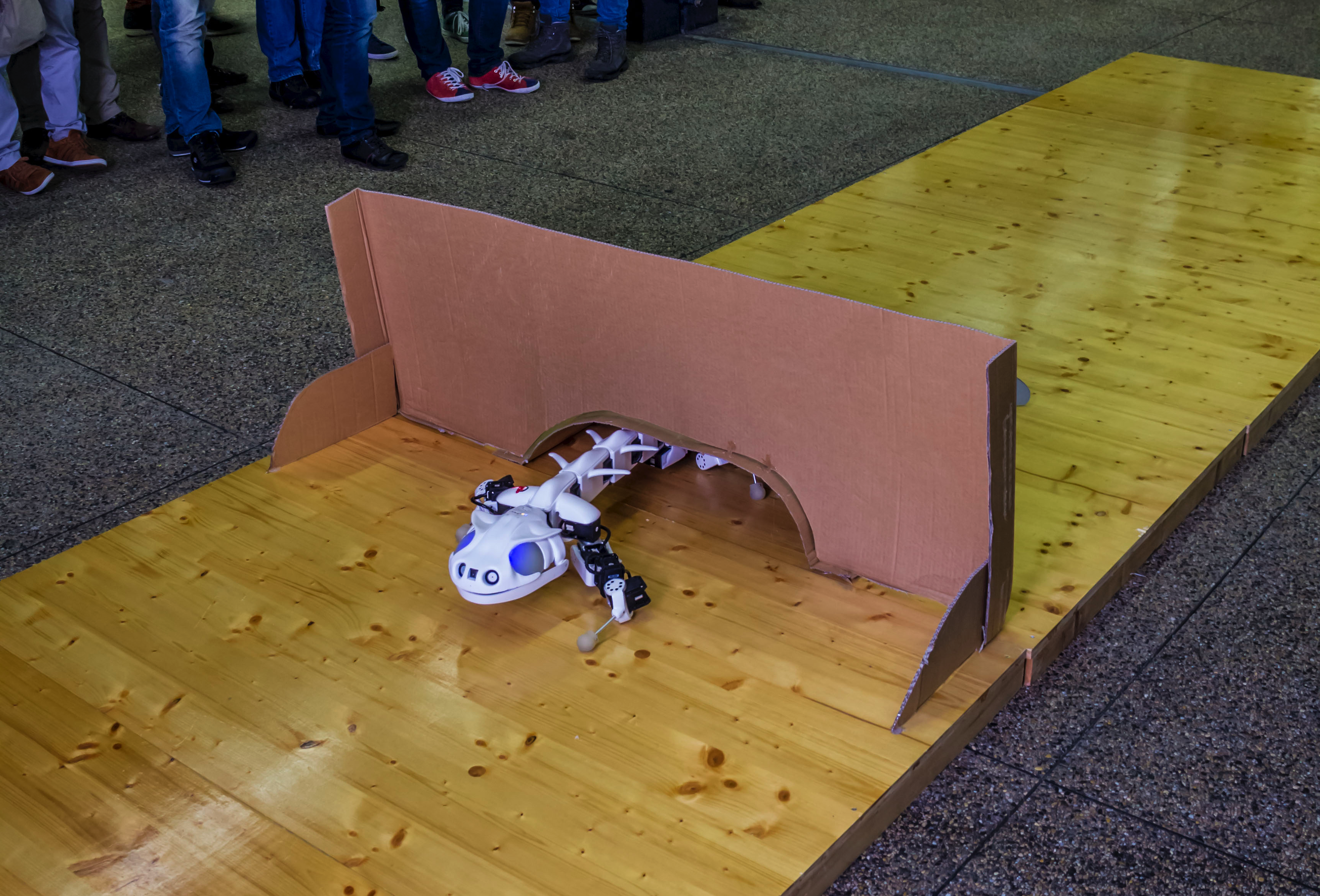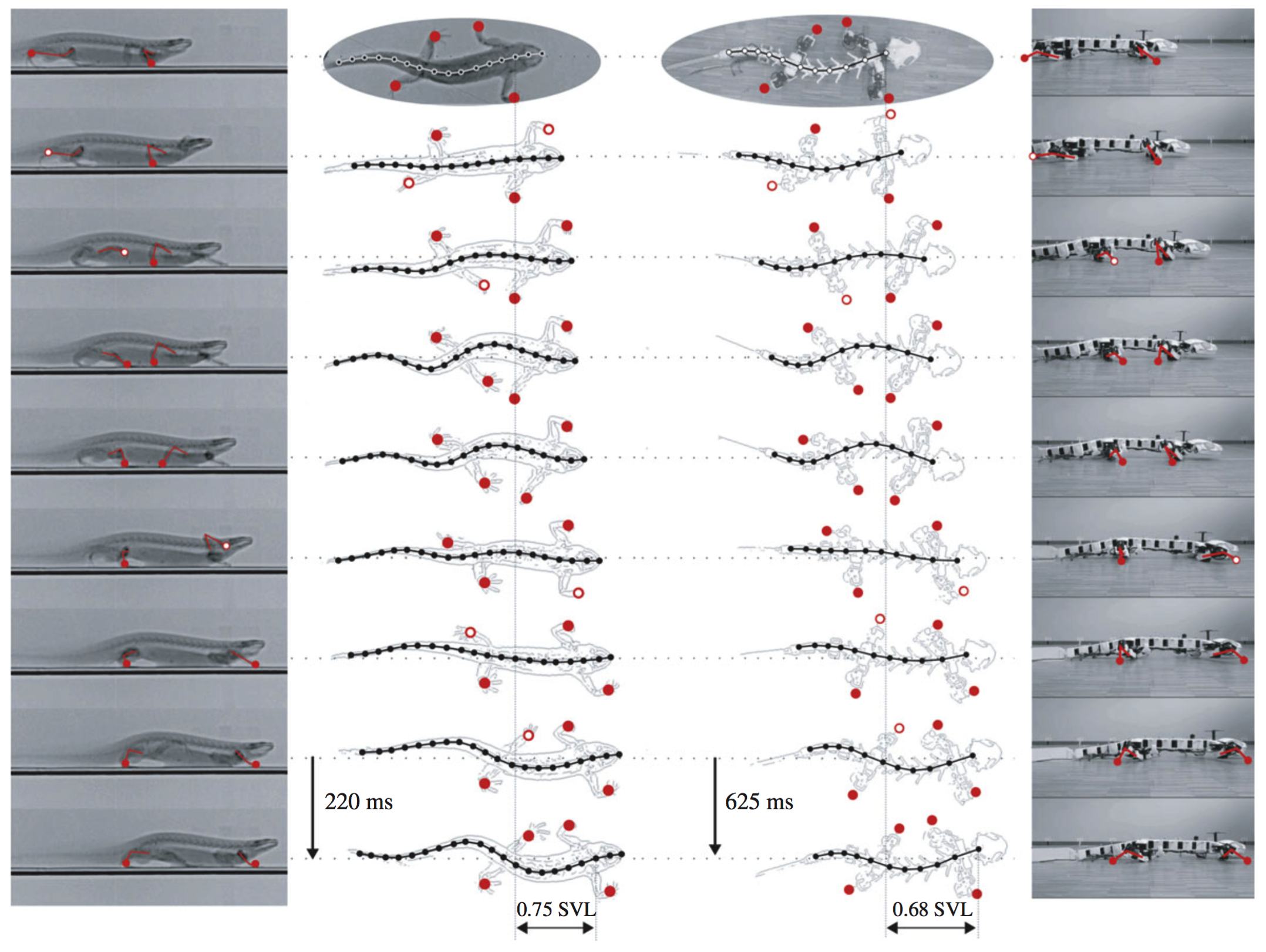No, this isn’t some The Men Who Stare At Goats-level insanity; it’s the groundbreaking work of robotics researchers at the Swiss Federal Institute of Technology in Lausanne, Switzerland. They’ve designed and built a 3D-printed “robomander” capable of both swimming and crawling — and perhaps one day saving lives, too.
“The salamander is an interesting animal from an evolutionary point of view,” Professor Auke Ijspeert, head of the institute’s Biorobotics Laboratory, told Digital Trends. “It can swim and walk, so understanding how it manages these transitions can tell us a lot — not only from a biological perspective, but also from a robotics one.”
The robot — dubbed “Pleurobot” — features 27 motors and 11 spinal segments, making it significantly simpler than its real-life amphibian inspiration. Deciding which parts of a real salamander to replicate was achieved by using an X-ray video machine to record the creature’s bone movements during locomotion and then working out the fewest number of component motorized parts needed to accurately replicate all of its gaits.
Ijspeert says one possible use of a (presumably larger) Pleurobot would be as an all-purpose rescue robot, since its ability to deal with a variety of terrains would make it stand out from the pack.
Longer term, however, he thinks it could have even broader applications.
“It’s not going to be immediate, but this work gets us closer to understanding how the human spinal cord functions,” Ijspeert explains. “The spinal cord is the body’s main locomotion computer, but much too little is understood about it. We know far less about the spinal cord than, for example, the motor cortex, the visual cortex, or other higher brain areas. This is because recording neural activity in the spinal cord is very difficult, particularly during movement. A big hope of our work would be to find out more about how the brain communicates with the spinal cord to initiate and modulate locomotion. I think this could have massive implications for neuroprosthetics. That’s ultimately what we’re aiming for.”
